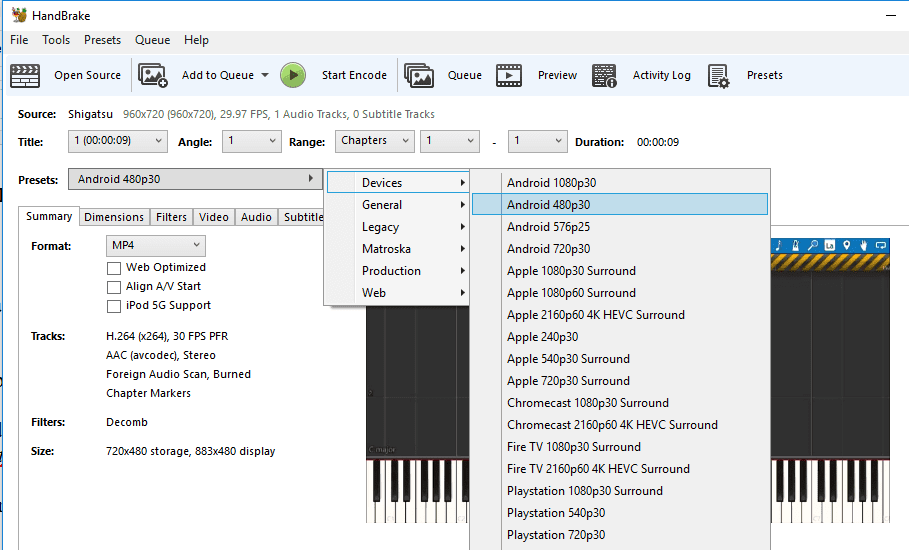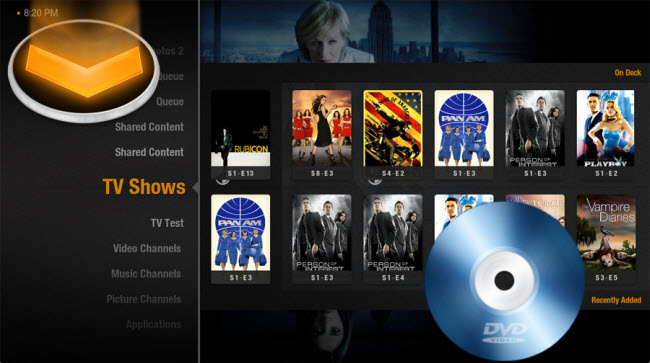
They can also have faster read speeds which will speed up the process of ripping each disk. With my old Blu-Ray player I would have what seems to be a perfect copy of the movie, no scratches noticable, and yet it would run into read errors. Certain Blu-Ray drives are much more affective when reading scratched disks. When ripping movies you need to get a perfect copy off of the drive, if there’s any piece of data or information that can’t be read on the drive it will be unable to rip. The Blu-Ray drive you use for ripping can make all of the difference. If you are still having issues, there are tools to manually get the VUK key but it will require DVDfab and another tool called FindVUK to extract the VUK from memory on DVDfab. It should automatically recognize it and use the local database in combination with their own online database. Then place the keydb.cfg file in the folder that MakeMKV is installed in.
HANDBRAKE PRESETS FOR PLEX MOVIE
If you have a recent movie that won’t rip, then on MakeMKV go download the latest keys from FindVUK Online Database. MakeMKV is able to decrypt movies by using of Volume Unique Keys (VUKS) from a database. Mine is named sg.conf but the name is totally arbitrary.”Īnd that should be everything, that’s everything I needed to do to get this to work. According to the post the solution is to: “Create a file on /etc/modules-load.d/ with the content sg then reboot. I found the solution to this problem in this Reddit post.

If you get the error that MakeMKV can’t find any Optical Drives in Arch Linux, it’s not MakeMKV’s fault. Optical drives on Arch Linux is kind of a pain to get working.

You also want to make sure you get the aacs libraries for Linux. But I’m sure that was my fault in the first place.īut I was able to get my own build of MakeMKV on the AUR (Arch User Repository) and that seemed to be working just fine for me. I had issues doing the official downloads and compilation on my end. I installed MakeMKV on Arch Linux, so this won’t apply to Debian users (sorry). So as that changes it may be a good thing to look into if you are concerned about storage space. The only issue is at the time of writing this article, nobody really supports it much. It’s also quite a bit more efficent than h265, so you will be expirencing better quality at the same file size. But the codec is open source and doesn’t have any licensing issues. AV1 at its core is essentially just like h265 whereas it perserves a lot of details at a highly compressed size. I hear that’s gonna be the next big thing. If you are reading this article in the future, you may want to consider compressing videos in AV1.

Ever since we got our NAS we had Plex on it.


 0 kommentar(er)
0 kommentar(er)
